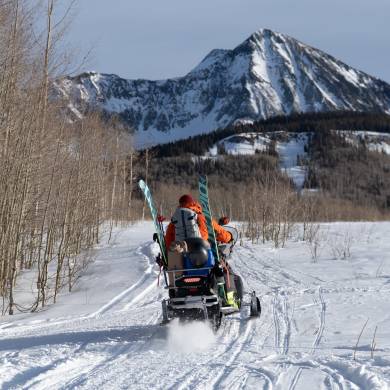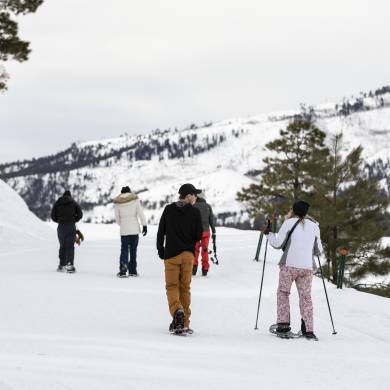How to Keep Your Campsite and Our Lands Free of Microtrash
When adventuring outdoors it is important to always ‘pack it in and pack it out’ - both to preserve and respect nature. Although it is sometimes difficult to leave absolutely no trace, we still need to strive to reduce our impact as much as possible. We would like to share ways to minimize our impact, identify what qualifies as waste, and reduce our overall impact.
What is Microtrash?
Microtrash is a subset of the larger problem of illegally dumped waste, particularly where natural ecosystems and wildlife are concerned. It is small bits of human-created waste disposed of into the environment and dangerous to local wildlife when digested, which can lead to several health issues for these animals.
Now it is relatively uncommon for a conscientious hiker or camper to deliberately abandon heaps of trash while exploring. What is more common is microtrash. The small bits of garbage that they either lose track of or shrug off as insignificant. Microtrash tends to come from disposable materials that either house or protect consumables. They are frequently so small that they get left behind, either intentionally or unintentionally. But even tiny bits of trash can collectively add up to a big problem for our ecosystems and wildlife.
What are Common Types of Microtrash?
The most common types are composed of plastic, metal, and glass. Some frequent examples you are likely to encounter include:
Plastics:
The small soft portions of plastic torn from trail mixes, protein/candy bars, plastic bags, or labels from bottles; hard plastics such as all or part of soda bottle caps, toothpaste or shampoo lids, floss containers, toothbrushes, pens, broken buckles from backpacks or camping supplies, lighters, flashlight batteries, fishing lures, and utensils.
Metals:
Beer bottle caps, pull-tabs from soda/beer cans, lids from canned food, tin foil, small tools or knives, and fishhooks.
Glass:
We recommend never utilizing a glass container when adventuring outdoors. Once broken it is nearly impossible to remove all pieces.
Miscellaneous:
Other types of discarded articles can include cigarette butts, loose paper from books or notebooks, floss, bits of string or rope, fishing string or nets, health kit supplies, toilet paper, tissues, torn clothing, and even things we traditionally think of as safe to discard, such as sunflower seeds and the hulls of nuts.
What is the Environmental Impact of Microtrash?
Wildlife is the primary victim of microtrash. These shiny and often bright bits of trash are easily spotted by scavenger-type critters and birds, mistaken for food, and are ingested by the animal or carried off back to their nest, endangering that animal’s young. Vultures are a prime example of animals that have been negatively impacted by microtrash. Take a look at the California Condor. They are foragers by nature, so they tend to ingest anything that stands out from the natural ground cover. Microtrash gets caught in their gastrointestinal tract, causing impaction, making it difficult or impossible to process naturally occurring food.
This is an issue that affects many other species of foragers, in air, on land, and in the rivers or oceans, and is something park rangers are constantly having to monitor and combat.
Further, microtrash pollutes the rivers, major lakes, and oceans. They can have chemical effects on the natural balance in an ecosystem, carry invasive seeds, bugs, or algae, trap animals if the trash is large or intricate enough to do so or even wind up in our watersheds.
Long-lasting and far traveling microplastics (tiny particles of plastic shred from larger products) is a growing modern concern, as plastic is non-biodegradable scientists have found small pieces of plastic in every part of the globe, from the deep seabeds of our oceans to the highest peaks in the world.
How do you Prevent Leaving Microtrash Behind?
The most common types of microtrash come from disposable objects. Pay attention to your food and consumable supplies, as they are the source of most instances of microtrash. A tip is to bring a sturdy bag - either reusable canvas, heavy plastic, or a dry trash bag that will survive your whole trip. Keep it easily accessible to all members of your group. Keep an eye on your meal prep areas, as that’s a likely culprit for creating debris. If anything gets broken, don’t wait until the end of your trip to clean it up. Be extra thorough with your inspection of that area, make a game for your kids to find any leftovers, and then do a good, long ‘sweep’ of your whole campsite before you leave.
Also, clear other people’s microtrash when you encounter it. You can do this on your own trip, or join a dedicated clean-up exhibition.
Finally, encourage other outdoors enthusiasts to do the same, whether when talking in passing on the trail, helping a friend or family member to plan their own trip, or just make a small post on social media. Adding your voice to the discussion will only help to amplify this important message.
Conclusion
The fact of the matter is that we are finding more materials that are neither biodegradable nor digestible turning up in our national parks and forests, not to mention all along the roads that connect us to them. Please be conscientious of your actions, keep track of everything you bring into the wilderness, and make sure you bring every bit of your stuff back out again.




